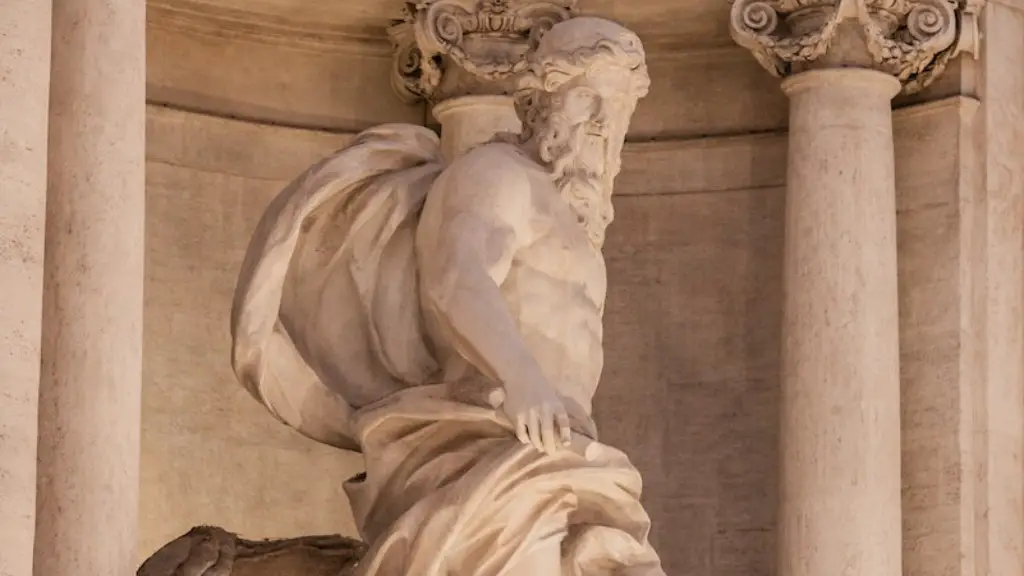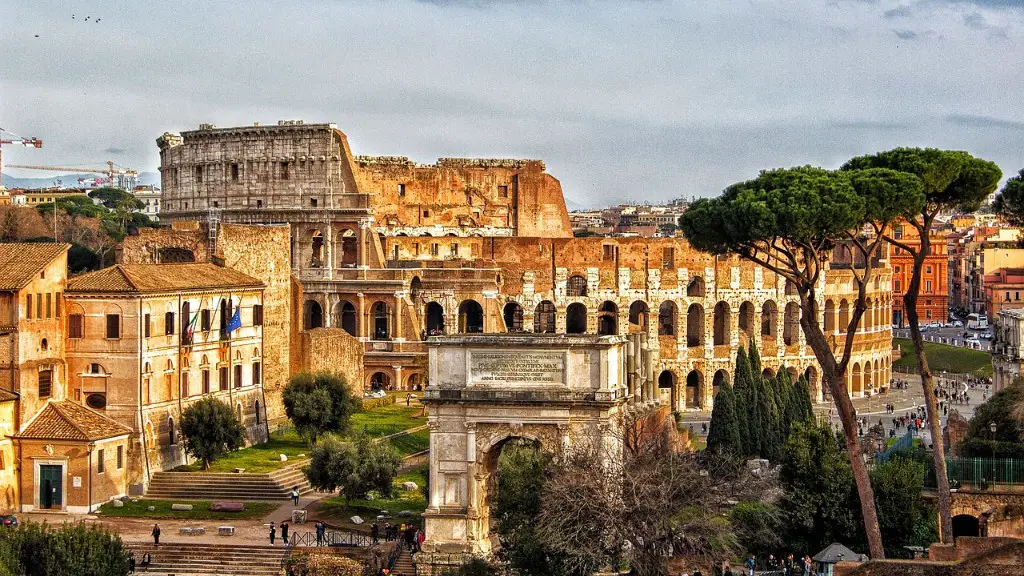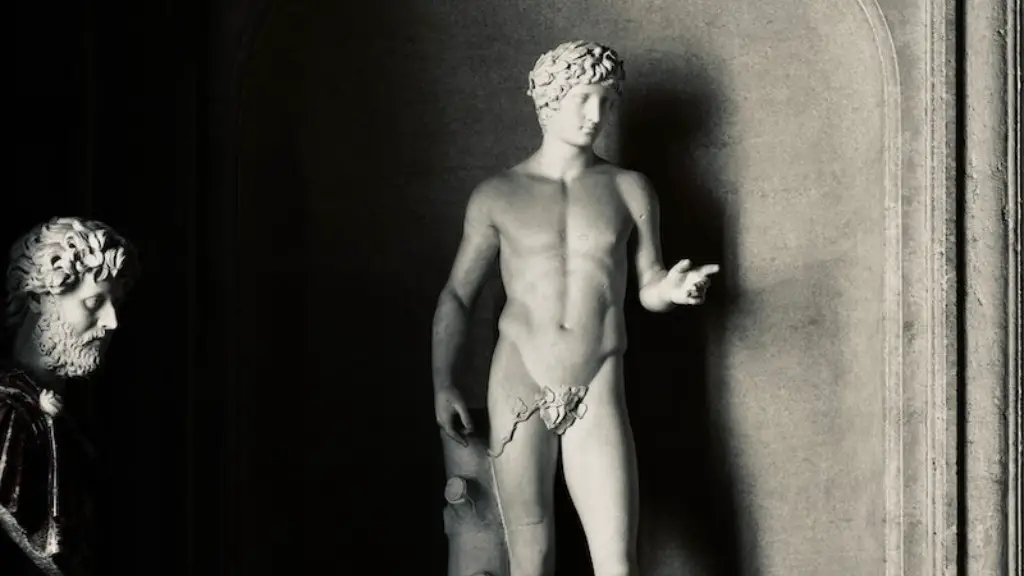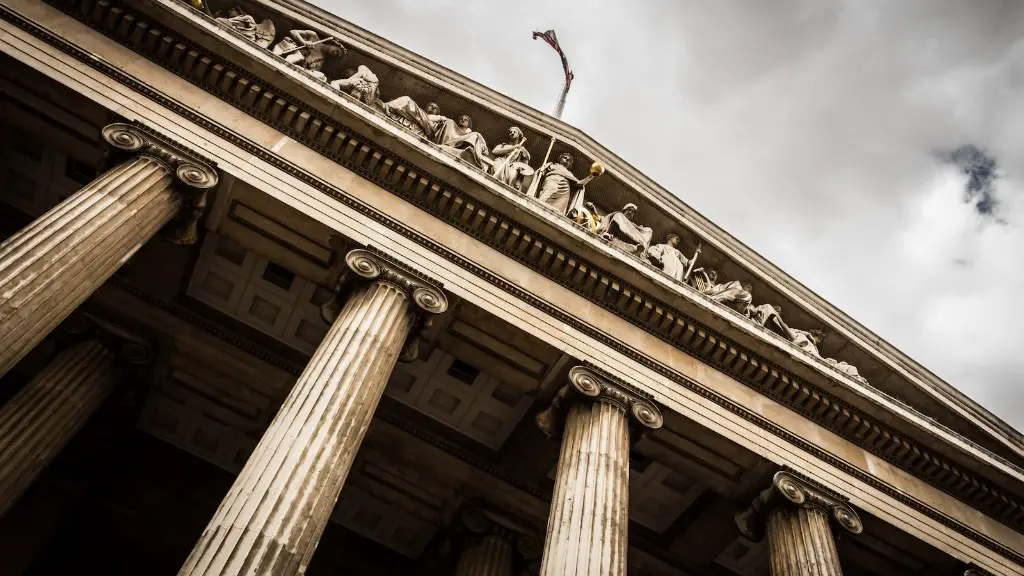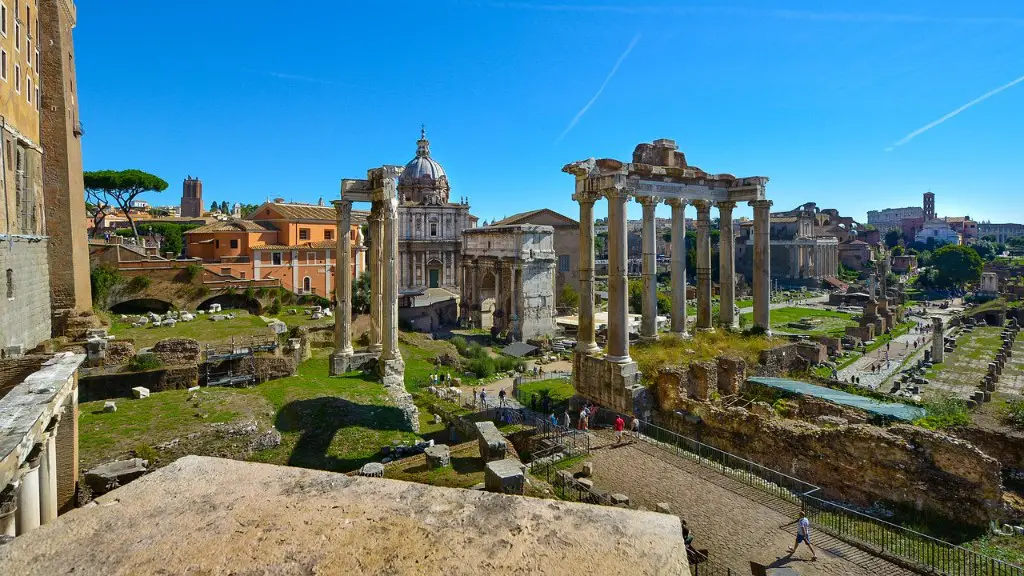Ancient Rome was one of the most powerful and influential empires in the world during its time. One of the keys to its success was its ability to acquire and manage a steady supply of freshwater for its citizens. But where did the ancient Romans get their freshwater?
To answer this question, it helps to understand how the Roman aqueducts worked. The earliest aqueducts were built around 312 BCE at the start of the Roman Republic. These aqueducts were designed to carry freshwater from natural sources like springs, streams and lakes from outside of the city to the population centers of Rome. Aqueducts could span up to 50km, containing numerous bridges and tunnels along the way. The waters were then used for a variety of needs, including drinking, irrigation, cooking and bathing.
To provide the city with these much needed resources, the Roman government employed two main approaches. One approach was the development of public wells and cisterns, where water was collected and stored. The other was using different types of pipes to transport water from farther away sources to the city. In addition, the Romans constructed various methods to conserve water, including bathhouses that allowed people to clean themselves using reused water.
Experts say the ancient Romans were indeed able to maintain a steady supply of freshwater, although there were still occasional droughts and fluctuations due to the unpredictable weather patterns. In addition, some wells were polluted and eventually made unusable, leaving the city to rely on other resources for fresh water.
Overall, though, the ancient Roman engineers and administrators were able to keep the city supplied with freshwater through the use of their aqueducts and other structures. This allowed the population to thrive, making Rome one of the most powerful societies of the ancient world.
Roman Aqueducts and Other Water Structures
The Roman aqueducts played a major role in supplying water to the city. These aqueducts consisted of numerous bridges and tunnels that all are connected and can carry the water from outside of the city to the city center. To provide the city with the much needed resources, the Roman government developed public wells and cisterns, along with the different pipes that would transport the water from farther away sources to the city. In addition, the Romans were also able to conserve water by constructing bathhouses that allowed people to clean themselves using reused water.
Apart from the Roman aqueducts, other methods were used to supply the city with freshwater. One such method was the use of clay pipelines called ‘clay-conduits’. This method consisted of long pipes laid under the ground and connected to wells over 4 meters deep. The water was then transferred through these pipelines to the city’s distribution centers, which in turn supplied the water to the citizens. These clay-conduits proved to be an effective method for transporting water over long distances.
The most common method for freshwater supply, though, was the use of wells. The city had thousands of wells located all throughout the city, from which water could be easily drawn and used for all kinds of needs. The main drawback of wells, however, was the risk of contamination, which could leave the water source unusable.
Romanly Advancing Water Technology
The ancient Romans were able to keep the city supplied with freshwater through the use of their aqueducts and other structures. In addition to these structures, the Romans also developed innovative and advanced water technologies. One such technology was the use of ‘manholes’ that allowed for easier maintenance of the aqueducts. The Romans also developed methods to divert rivers and streams, thus allowing water to travel even longer distances. These waters were then stored in different reservoirs, from which the water could be used for various purposes.
The Romans also constructed detailed channels and drainage systems for collecting the wastewater from their homes and draining it back into the aqueducts. The Romans even went one step further and developed sophisticated filters to purify water and make it fit for drinking. This allowed not only for freshwater to be easily transported but also for it to be of good quality when it reached the city.
The ancient Romans were also able to develop effective irrigation systems to help with agricultural productivity. This was especially important for ensuring that the city had a steady supply of food. The Romans were known to use the water from their aqueducts to irrigate their crops and agriculture, allowing them to increase their agricultural productivity and thus feed their growing population.
The Social Impact of the Roman Water Supply
As the ancient Roman empire grew, so did its need for freshwater. With the help of their water technology, the ancient Romans were able to supply the city with freshwater and enable its citizens to thrive. This allowed the population to grow and helped the city to become one of the most influential cities of the ancient world.
The availability of freshwater also had a significant social impact on the city of Rome. With the increased availability of freshwater, the citizens of Rome were able to take better care of their health and hygiene. This allowed for greater social stability and a better quality of life for the people. This in turn allowed the Roman Empire to grow and expand, becoming one of the most powerful empires in the ancient world.
Furthermore, the ability of the Romans to supply freshwater was also seen as a sign of their power and influence. With the help of their advanced technology and engineering skills, the Romans were able to bring freshwater from even the most remote locations, to the city of Rome. This was seen as a testament of their power and technological prowess, and further elevated their reputation in the world.
The Legacy of the Roman Water Supply
The Roman water supply system was a remarkable feat of engineering and knowledge that left a lasting impact on the world. Not only did it help the city of Rome grow and flourish, but it also served as a guide for modern engineers and thinkers. Even today, many cities have adopted the same principles used by the Romans to supply their cities with freshwater.
In addition, the ancient Roman water supply system also served to inspire later generations. This was especially true in the field of civil engineering, with many modern engineers learning from and studying the Roman aqueducts and other water technologies. The Roman water systems were recognized for their efficiency and complexity, something that modern engineers still strive to achieve.
The ancient Romans were able to build a powerful and influential empire with the help of their water technology. This technology allowed them to feed and sustain their growing population, and allowed their cities to flourish. This was made possible through the construction of aqueducts and other structures that transported freshwater from natural sources to the city of Rome, as well as the development of other methods for obtaining and storing water. The legacy of the Roman water supply still lives on today.
Conclusion
The ancient Romans were able to keep their cities supplied with freshwater through the use of aqueducts, wells, cisterns, and other water technologies. These technologies allowed the Romans to build a powerful and influential empire, as well as to ensure the health and wellbeing of its citizens. This legacy still lives on today, with many cities having adopted the same principles used by the Romans to supply their citizens with freshwater.
